Crunch, Crunch, Crunch—the sound of dead grass beneath your feet or when you look out your window, at your normally luscious green lawn, and see patches of brown. This is because of this year’s drought. These are most people’s concerns when it comes to a drought, but what about farmers and their crops?
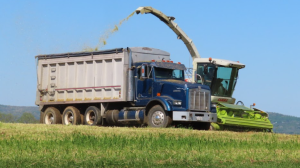
This year, Maryland averaged around 43.6 inches of rainfall throughout the year. This year’s drought has impacted farmers and their crops immensely causing their yields to diminish in size. The color and even taste was lost due to very little nutrients and water. The most recent severe drought occurring in Maryland lasted from 1999-2002. Through this drought streams dried up, ecosystems were affected, and it lowered crop yields. This year’s severe drought has brought a huge decline to the agriculture industry causing impacts throughout our community.
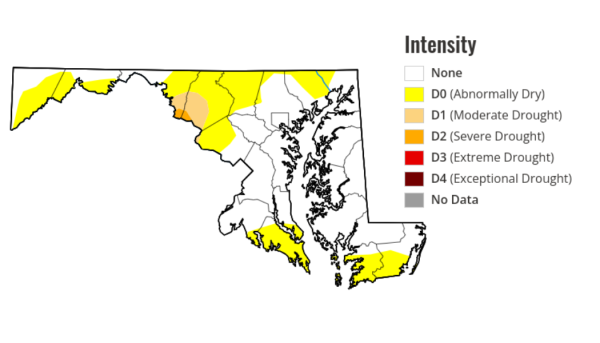
Through this past year as the weather warmed up, the drought became more severe. In Frederick county our seasons were abnormally dry. While moving down near Brunswick, moderate and severe droughts occurred causing an impact not only to your grass turning brown.
Abnormally dry seasons impact crop growth by stunting and delaying its season. Risk of fires are elevated, lawns brown earlier, and surface water levels decline. When you move to moderate drought conditions honey production declines, irrigation will increase, making hay and grain yields lower than normal, wildlife is stressed, especially fish due to water levels declining in their ecosystems, and wildfires/ground fires are increased. This year, Brunswick has been through a severe drought impacting our agriculture and ecosystem, causing wildlife to move to farms for more food, hay prices to rise as farmers feed their cattle earlier, crops are impacted by yield and fruit size, trees are brittle and susceptible to insects, warnings are issued for air quality and for outdoor fires, water is declining, irrigation ponds are dry, and outdoor water restrictions are implemented.
Local farm, Shafdon Farms, was affected by the drought. Shafdon Farms has been dairy farming for 71 years. They grow 380 acres of corn, 60 acres of wheat, 190 acres of triticale, and 100 acres of rye. Below is a list of their farm’s good yields for an average year and yields from this year.
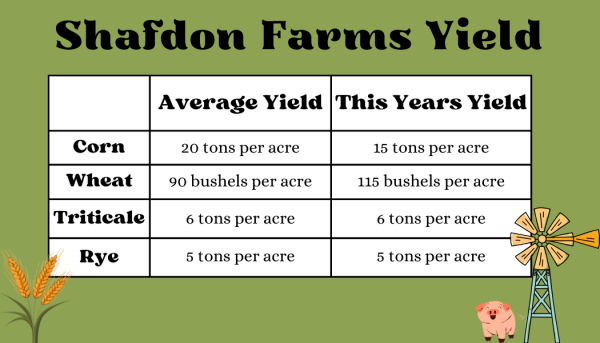
The drought caused Shafdon Farms corn yields to decrease by 25%. Interestingly it had the reverse effect on wheat, causing its yields to increase. This is because wheat is a summer harvested crop and it likes dry weather. Wheat still needs rain but does not do as well in more wet years. In an interview with Brent Shafer from Shafdon Farms, he explained that despite this year’s drought it was, “an impressive yield considering [the lack of] rainfall.”
Shafer explained that one benefit of the drought was the corn grew slower and did not put on as many layers of lignin. According to Study.com, Lignin is “a branching material that holds a plant together and keeps the structure of the plant stable.” When corn silage is fed to cows, it includes lignin, which is indigestible. So the less lignin the better because the corn is more digestible.
Another victim of this years drought is Justin Tucker of Creekside Farms. He has been farming for 15 years and his family has been farming for 100 years. He grows 500 acres of corn and 700 acres of soybeans. Below is a list of his good yields for an average year and yields from this year.
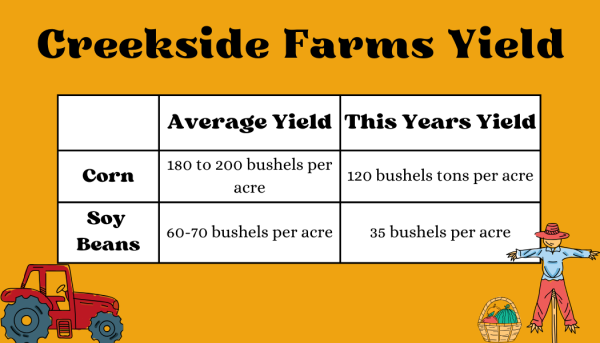
Looking at Justin Tucker’s crop yields from this year, there was a decrease, with the crops yielding 120 bushels per acre of corn and 35 bushels per acre of soybeans. Tucker said, “[the] lack of rain during pollination and grain fill drastically reduced yields.” Since the drought affected crops so much this year, “we need some snow to replenish sub moisture. Snow melts slowly and helps because there is no runoff.”
In the past, there have been multiple different droughts occurring in our area. Such as the droughts in 2010 and 2011. Although this year may have been the, “worst [year] for lack of rainfall, yields were better [than expected] because genetics in the seed have come a long way in mitigating drought stress.”
Another local farmer, Jill Allen, from Glen-Toctin Farm is a third-generation dairy farmer. The farm was bought in 1954 by her grandfather and great uncle. Her farm grows 700 acres of corn, soybeans, wheat, alfalfa, and hay. A good yield for an average year for her farm is 150 to 200 bushels per acre of corn and 70 to 100 bushels per acre of soybeans. The exact yields for this year cannot yet be determined because they have not finished their harvest season, but she feels her yields will be significantly low this year. Because of decreased yields, Allen says, “we will have to limit the amount of corn we use in our ration to adjust. This will affect what farmers receive in return for their good. The less amount of feed you have, will greatly affect your cow’s milk production.”
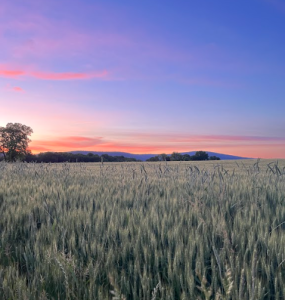
Jill Allen explained that the drought not only affected her farm but also her small business. Jill grows and sells around five acres of sweet corn, and has done so every year since she was eight years old. This year her profit decreased because the drought shortened her selling season. She claims over half of her crop was damaged from the drought.
This year Glen-Toctin farm’s harvest time was affected because it was so dry. Allen explained that when chopping alfalfa, they were able to mow, rake, and chop their hay all on the same day. In previous years, they could not do this. Looking back to 2018, Jill remembers how wet that year was. She remembers how they, “could not get into the field when crops were ready to be harvested since the ground was saturated.” From year to year, whether farmers have a good year or a bad year, little rain or too much rain, “Farmers take a large gamble every year as they plant their crops. The weather determines the success of their crop, which is entirely out of their control.”
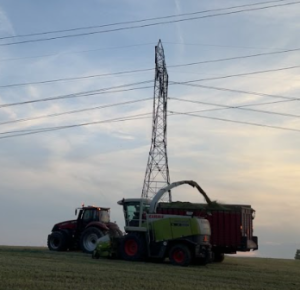
Farmers’ yields determine their profits; high yield, equals higher profit and low yield equals lower profit. Farmers that grow crops to feed their animals need high yields, so they have enough feed to feed their animals throughout the year. If they do not have a plentiful harvest, they will have to buy crops/feed to feed their animals. After interviewing local farmers and reviewing research, we saw how the drought reduced yields, affecting farmers and our community.
So, do we need a lot of rain in order to have a successful harvest? Yes and no. We need rain but not too much rain. Ironically, when crops get too much rain, yields also decrease. According to the University of Nebraska-Lincoln researchers, “found that when 6-inch tall corn was flooded for 24, 48, and 72 hours, corn yields were reduced by 18, 22, and 32 percent at a low nitrogen fertilizer level.” In addition, researchers found, “when 30-inch tall corn was flooded for 24 and 96 hours, yields were reduced by 14 to 30 percent.” The article also explains that with a high nitrogen fertilizer level and a high nitrogen level in the soil, yield reductions will not be as severe.
To help reduce the risk of losing crops if there were to be another drought next year, there are many different strategies farmers can implement for drought resilience. These plans include: replacing lost revenue (crop insurance and other risk management plans), improving soil health (plant cover crops and adopt conservation tillage to prevent soil erosion), provide more usable water to irrigated crops (invest in irrigation efficiency), planting drought tolerant crop varieties (purchasing a variety of seed that is more drought tolerant) and more.
The future is a mystery and it’s impossible to predict what next year will bring. Each year has its ups and down and every day brings on new challenges. As each day passes, it becomes harder and harder to work in the agricultural industry; costs increase, profits decrease, and the work gets harder. The love for the job is what gives farmers their drive. Farming is more than a job, it’s a lifestyle. Through the good years and rough ones, like this year, farmers persevere. Farmers can only plant the seeds and put their trust in God to provide a plentiful harvest.
“It is only the farmer who faithfully plants seeds in the spring, who reaps a harvest in the autumn.” —B.C. Forbes



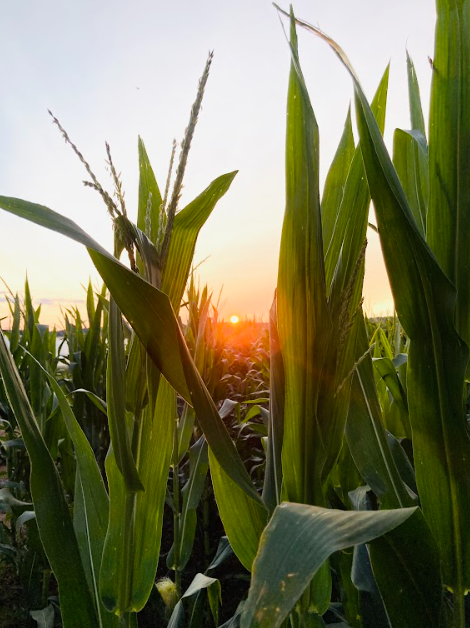






M.J. King • Jan 11, 2024 at 12:30 pm
i didn’t know about this. i never really thought about the health of our agriculture and how it affects us
Julie • Oct 31, 2023 at 11:48 am
Awesome article ladies. I learned a lot.